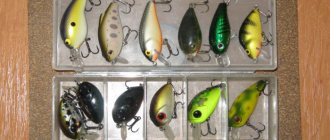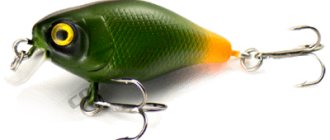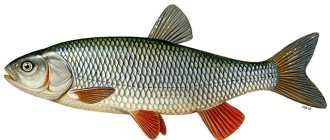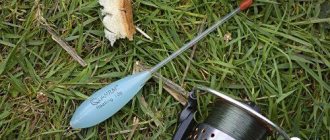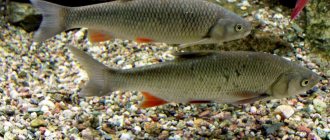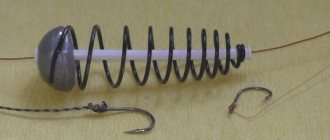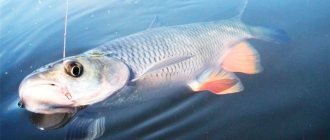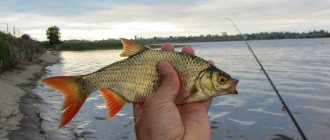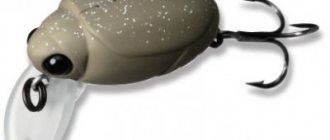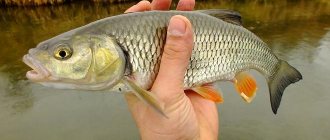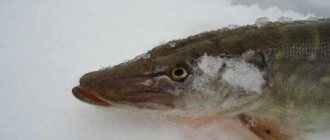Where are chub found in winter?
Chub is a fish belonging to the Carp family. Found in freshwater bodies of water (rivers, lakes). In winter, it prefers to stay on shallows with a sandy or rocky bottom. It can also be found in places with thick snags and large accumulations of silt and algae. In such places, fish feed on various invertebrate organisms, crustaceans and other inhabitants of the reservoir.
Where to look for chub in winter when fishing
So, for targeted fishing, the right time is chosen, the beginning of winter or the end of freeze-up, before the water becomes cloudy. Places for catching chub in winter on small rivers (in the upper reaches of large ones) are easier to find. In bodies of water where there is no current at all, it is useless to look for it.
The most promising places for fishing:
- Areas with a current at a depth of 3-6 meters with a sandy bottom with uneven surfaces;
- Deep gullies with current near the shore;
- Whirlpools and places where the return stream flows into the main stream, holes under rifts and after rapids;
- Exits from pits with swirling water flows.
During periods of passivity, the chub stands in small schools at the bottom, almost without moving in the indicated places. Since in many such places there is a fairly strong current, gullies can form there and it will be dangerous to move around. But these are excellent conditions for chub. The chub chooses its routes around the territory using vision, preferring areas of light ice or similar gullies. You need to look for it by the first ice or the last ice throughout the entire water area of its summer presence. During this period, the largemouth is active, circulating around its usual places in search of food.
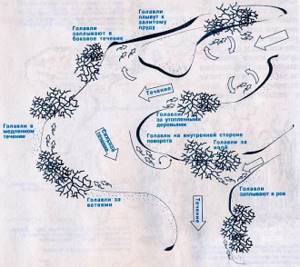
What does it bite on?
Winter is a period for extreme fishing, which may not always be successful. But, if you choose the right bait for this fish, then the representative of the Karpov family will bite, and you can easily hook it.
Important! In severe frost, hunting for chub is considered useless, because during such a period it stands motionless in holes at the bottom of the river and is not interested in food. It is caught when the temperature drops to -5°C, when the fish swim out of their shelters to feed.
For the winter period, bait in the form of bloodworms (mosquito larva) is used. To get such bait, you need to wrap a piece of raw meat in a gauze bag and lower it to the bottom of the shallow water of the river, pressing it down with a weight. The next day, remove it from the reservoir and collect bloodworm larvae with your hands. You can also use raw liver as bait.
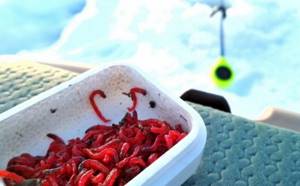
Catching chub on girders
Fishing with girders takes place in sections of the river with high currents. The chub is a very suspicious fish, so often, when it hears a noise or feels a hook, it releases the bait, so it is important that it is not noticeable in the water.
For this gear you will need:
- hard foam reel with soft stroke;
- monofilament line 0.25 mm thick;
- hook No. 5.
On rivers with strong currents, girders are used. In this case, a heavy sinker is placed on the bottom, and a float hidden under the ice is used as a signaling device. However, this fishing method is used much more often when fishing for pike.
Choosing gear for fishing in winter
Winter fishing is divided into three periods:
- first ice - covers the period of late autumn - early winter;
- deaf winter - mid-winter;
- the last ice is the end of the winter period, the beginning of spring.
Did you know? The famous American fisherman Joy Pallot caught the largest freshwater fish off the coast of California.
—
it was a sturgeon weighing 210 kg.
The greatest chub bite is observed during the periods of first ice and last ice. To catch a representative of the Karpov family, you also need to prepare gear that will allow you to quickly hook this fish and will not cause trouble in the winter cold.
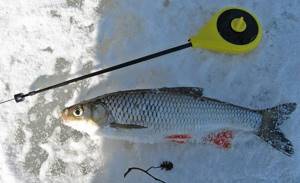
Winter fishing rod
Gear for quiet winter hunting should be sophisticated and inconspicuous, but at the same time capable of withstanding the powerful resistance of the caught fish. The fishing line should be very thin, because the chub will easily notice a thick thread in the water and will not even swim up to the bait.
Find out also about fishing rods for winter fishing.
You can also catch a representative of the Karpov family using a feeder - a bottom tackle containing a load with a feeder. This type of fishing rod allows you to create a permanent place for feeding fish and catching it. The frequency of feeder transfer can vary from a few seconds to a couple of hours.

Spinning
During the frosty period, it is more difficult to catch a chub using a spinning rod than during a warm period. But, if the fisherman is full of enthusiasm and sets himself the goal of hooking this fish at any cost, then he needs to start selecting baits.
For fishing in winter, the following baits are selected for spinning:
- wobblers: minnow and shad, which have low mobility and are small in size;
- small spinners with an oscillating effect;
- baits made of silicone material : worms, slugs.
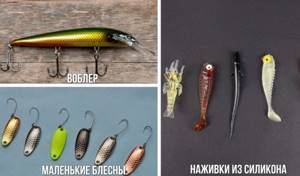
Winter fishing rod
Jigs, spoons, and balancers are the main winter baits for vertical fishing, which will bring a rich catch of chub in December.
An excellent video that well illustrates catching chub on the river in the early winter hours using a winter fishing rod and jig. This video material well describes the depths and approach to catching chub on the Oka.
Fishing with a jig
One of the common winter gear is the jig. To fish with a jig you will need:
- fishing line with a diameter of 0.14‒0.17 mm;
- pellet 6‒8 mm;
- hook No. 5‒6;
- white cambric;
- It is better to choose a jig with a natural steel color.
You should not take a very thick fishing line, as this will scare away the chub (cautious fish). You can put colored cambric .
The following types of jig attract chub:
- ant;
- Uralka;
- pellet;
- oatmeal;
- droplet.
Most often, of all the above-mentioned jigs, shot is used in February and March. The weight of the jig depends on the strength of the river current. If the jig can reach the bottom, then the weight of the jig is selected correctly.
Chub are caught on a fishing rod with a jig, playing along with bait. They start from the very bottom and, with slow oscillatory movements, lift the jig up 30-40 cm with short pauses. You can also attract fish by making several sharp movements up and down, simultaneously raising turbidity from the bottom of the reservoir.
See jig fishing techniques. This video reflects inactive fishing, which is why the angler is so inactively shaking the nod of the fishing rod . However, this leads to frequent bites, thanks to the right approach to attracting fish.
Lure fishing
It is best to catch chub using a spoon on the first and last ice. For this you will need small light-colored spoons up to 4 cm long. On fast rivers it is better to use gliding type spoons, and for reservoirs with weak currents a diving spoon is suitable.
To attract the attention of the chub, make sharp movements with the rod from the bottom to a height of up to 30 cm upward, maintaining a short pause between jerks.
Lure
There are 2 ways to feed a representative of the Karpov family:
- Long term. The angler must spread the chub feed over a long period of time. Some “quiet hunters” feed fish for 2 months or several weeks, every 2–3 days. But, you can shorten this period to 3 days and feed the fish in the same place in the morning, then you can confidently expect a good catch from fishing.
- One-time use. Early in the morning, the fisherman throws food for fish in the place where they accumulate and immediately begins to catch them.
Did you know? In 1968, off the coast of New Zealand, fisherman Donald Heatley sailed on a boat for 32 hours after a black marlin weighing 700 kg, which finally got off the hook.
To lure a representative of the Karpov family, you need to use complementary food consisting of the following ingredients:
- pearl barley porridge;
- boiled corn kernels;
- steamed peas;
- cake;
- bread crumbs;
- bloodworm;
- maggots.
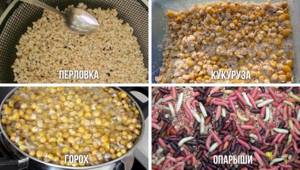
Open water fishing gear
Open water fishing will be successful on warm days when the water warms up under scant sunlight. To do this, it is better to choose small rivers connecting to a large deep river. Mass entry of chub into small rivers begins at the moment the rivers enter the banks. The chub not only looks for food here, but also chooses a place for spawning.
For fishing you will need:
- light rod with medium action and flexible whip;
- coil;
- fishing line with a tensile strength of 3 kg;
- swivel;
- leash made of fluorocarbon fishing line 8 cm long;
- a sinker whose weight depends on the speed of the current.
A swivel or ring is put on the cord, and a side wire with one or more weights is attached. Hook No. 6 is attached to the end of the main line. For bait, you can use any bait: worm, dung beetle, bloodworm, pieces of lard, bark beetle, maggots.
Ice fishing methods
There are two ways to hook fish from ice:
- on a jig;
- on a spinner.
In order for fishing to be successful, it is important to choose the right jig model and spoon size. Read on to find out which baits are best to use.
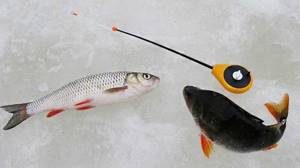
For the spinner
You can catch a chub using a spoon in early December, with the appearance of the first ice, and in late February - early March, when the ice melts. At such times, the chub is still interested in food that moves.
Therefore, the fisherman must select spoons according to the following criteria:
- size - 3–4 cm;
- color - white, gray;
- type of spoon - gliding or diving.
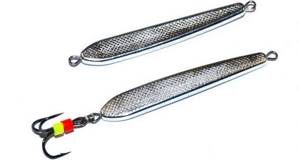
On the jig
There are many models of jigs that differ in shape:
- disk;
- a drop;
- ant;
- bug;
- pellet.
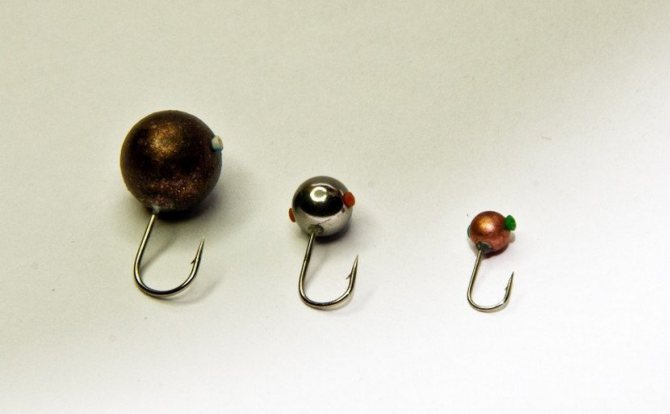
As noted by experienced fishermen, the best bite is observed with the classic version of the jig - the shot. A representative of the Karpov family is hooked on baitless models, and the bait is imitated with multi-colored animal elements located on the hook. You can also attach live bait to the jig: bloodworms or worms.
☸️ Lure fishing
Large chub are caught using a spoon, but this fishing method is effective only at the beginning of the season (on the first ice) and during massive ice melting. When trolling vertically, small perch often interfere with the fishing, which, unfortunately, cannot be avoided. Lobaty reacts well to silver-colored spoons gliding in the water column and diving. Hooks can be soldered or hanging. In recent years, spinners with a hook suspended on a chain have become popular. Such a spinner plays very seductively in the current.
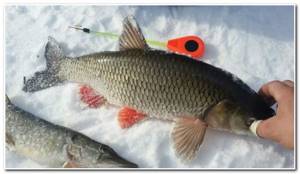
Fishing technique and nuances
Do not forget that the fish is very shy. Therefore, you should make a hole as quietly as possible. The noise of an ice ax can scare away a chub for a long time. Therefore, they are shaded with reeds or other available means. You can approach the hole you have made after 30 minutes. after finishing work on cutting it down.
Important! The chub bite is especially good on sunny days. To hook it, 3-4 cm spoons are used, making zigzag movements when they hit the water; they are white in color.
A representative of the Karpov family very rarely rises to the middle of the river in winter. Therefore, flashing occurs at depth. You should not make sudden movements to a height of 50 cm, because they will be ineffective. It is better to make small jerks with the line raised by 20 cm at intervals of 1–2 seconds.
Video: How to catch chub in winter

☸️ Fishing with a balance beam
The balancer, like the spinner, is used exclusively at the beginning or end of freeze-up. Outwardly, this bait looks like a small fish; it works in a horizontal plane, so the chub, which usually studies its prey before throwing, grabs it without much hesitation. The shape and size of the balancer depend on the fishing conditions. According to most fishermen, balancers weighing 6-10 g with a body length of 4 to 6 cm work best. A carabiner is not used to connect the fishing line to the bait; this element can alert a timid chub. The tactics for fishing with a balance beam are as follows:
- drilling holes in several promising places;
- fishing of different horizons in the first hole;
- fixing the fishing line at the depth at which the chub responds;
- fishing the remaining holes.
When fishing for chub on a balance beam, you should work with a fishing rod more smoothly than when catching perch, since it does not like excessively sudden movements of the bait.
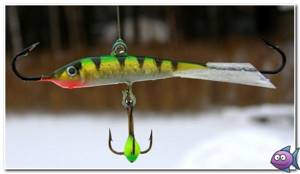
Features of fishing on non-freezing rivers
To catch a chub on an ice-free river, you need to know that the fish has excellent vision. Therefore, the fisherman should wear dull, plain clothes. It is also necessary to remain quiet and move slowly along the shore.
Important! It is necessary to catch chub during an active bite, starting at 10 a.m.
Before you start fishing, you need to feed the chub porridge with the addition of bloodworms and other ingredients that it feeds on. You can also use special flavored drops for bait, which can hold the fish in one place for a long time.
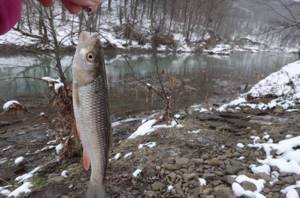
To catch a chub in winter, you need to know its exact habitats and feeding habits at this time of year. You should also carefully prepare the gear to catch fish and the bait to attract it.
We identify promising places for chub fishing
So, let's start with the fact that it is difficult to catch a chub in winter. You need to constantly look for it, but we must not forget that the chub is a very shy fish, which actually complicates this fascinating process.
How to catch chub near snags
Catching chub with a cockchafer
Chub fishing: advice from professionals
When you go out on the ice, the first thing you do is drill holes in areas where you managed to meet chub in the warm season. In the process of catching chub, the possibility of catching other fish, for example, perch, roach, is not excluded. Therefore, even going for chub, the catch will be guaranteed.
It is necessary to look for chub in areas with a sharp change in relief. The chub especially likes to stand in holes or along the edge, around underwater hills, not far from snags. In the shelters there are mostly inactive fish, we are not interested in them, so we should try to lower the bait a few meters from the hole or underwater obstacle. This is where you will encounter active fish, which, if presented with the bait correctly, are guaranteed to be interested in it.
In winter, the chub stays mainly in deep areas of the water area, so you should start looking for it from a depth of more than three meters. However, its bites can occur in any horizon, so during the fishing process it is important to be constantly ready to hook. It is necessary to fish each hole carefully, starting from the bottom and gradually bringing the bait to the edge of the ice, where fish are most often found in warm weather. In 80% of chub bites, especially large ones, occur no higher than half a meter from the bottom.
It is recommended to start searching for active fish sites by completing 7-10 holes, the distance between which is maintained within 2-3 meters. Fishing starts from the first hole, it takes 10-15 minutes, if there are no chub bites, we move on to the second.
Even if you managed to catch a chub from the hole, it is recommended to change the place and return to the scoring hole only after 30 minutes. Please note that it is extremely rare to catch more than one chub from one hole in a row. In addition, it is important to remember the place where the chub was caught, and on your next fishing trip it would be most correct to start catching or searching for fish from this bow. On the first and last ice during periods of thaw, the chub can approach the shallows closer to the thickets of vegetation. The chub is found only in areas with current; the fish does not feel comfortable in calm water.
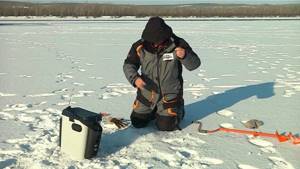
Chub for winter skating
On the same Oka, in winter, chub often feeds on the main riverbed, choosing areas with twisting currents and uneven bottoms. Such areas can be identified by ice hummocks. But in hummocks the ice is often compressed together with sand, so you won’t have enough knives for an ice drill. Holes need to be drilled where hummock ridges (branches from a large zone of hummocks) alternate with regular areas of ice. Here you need to find exactly the stream on which the “white” fish comes out to feed. To do this, in places where there are vortex flows, you have to drill holes close to each other. Since the vortex flows of water move from side to side, the fish coming out onto the feeding stream do not bite all the time, but at those moments when the position of the stream meets certain conditions, for example, it coincides with some features of the bottom.
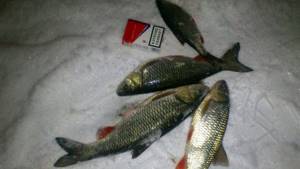
Having found a promising point, I begin to fish with a special equipment moving with the flow. It is a comfortable fishing rod with a key reel and a hard nod at the end of the whip. I wind monofilament with a diameter of 0.14–0.16 mm onto the reel. A leash with a diameter of 0.12 mm and a length of 40 to 1 m. I select the leash according to the strength of the current, its task is to move smoothly from side to side. The sinker is a “Cheburashka”, in which one “ear” is bitten off. It is attached to the end of the fishing line. Ideally, when fishing, you need to have several fishing rods with sinkers of different weights, designed for different fishing conditions. In order for the sinker to roll along the bottom, it is selected according to the depth of fishing and the strength of the current - usually in the range of 1.5–6.7 g. The leash is attached through a carabiner or a loop in a loop 10–35 cm above the sinker, depending on the length of the leash and current forces. It should be taken into account that a highly tied leash has a vertical range of movement. Hook No. 15–18. Bait - a bunch of bloodworms, a caddis larva or other nymph, maggot, small worm, fry.
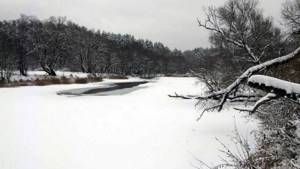
The tactics for catching chub are as follows. Having dropped the load to the bottom, they adjust the position of the fishing line according to the tension of the nod, then slightly moving the “Cheburashka”, allowing it to move forward under the influence of the flow. As you move away from the hole, the sinker moves more and more slowly. You need to take a “Cheburashka” of such mass that, under the influence of the current, it can move forward at a distance of up to 2–3 m. That is why, when fishing at different depths and flows of different strengths, you need to have fishing rods with different weights. This type of fishing is carried out on the principle of under-ice rolling (bottom fishing), which allows you to expand the search area for chub.
When there is little activity from chub and other “white” fish, I switch to fishing without moving the equipment.
Reviews from fishermen about catching chub in winter
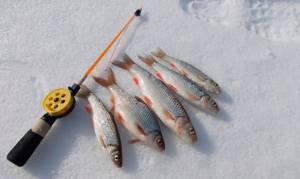
User Evgeniy writes that chub fishing in winter is very exciting, although catching a big trophy is almost impossible. Grade:
User Andrey writes that ice fishing is very difficult, but if you use a jig with multi-colored cambrics and choose a decent place, you will get a bite. And you can even catch several fairly large specimens. Grade:
User Kostya writes that the most important thing is not to give up and be able to wait. Once I had to sit for several hours waiting for a bite, but the result was impressive; I caught 10 fish in the late afternoon. Grade:
User ALEX writes that using a float you can effectively catch chub in both winter and summer. Grade:
User Denis writes that it is very convenient to use a jig with an attachment, because fish are attracted not only by the game, but also by the smell, so they bite constantly. Grade:
User Andrey writes that he catches chub with a bark beetle using a jig. I hook it simply: I pierce it right through the head with a hook. On small and medium-sized rivers, I mainly look for chub close to the shore, focusing on snags or bushes. Grade:
User Sergey writes that he hunts very often, but sometimes he has to return empty-handed, and nothing helps, not even changing the place and bait. And on other days I’m lucky, they bite regularly, and I bring home 6-10 pieces. Grade:
Hunting chub in winter is quite a difficult task, because the fish is very capricious and shy. But if you choose a good place, decide and prepare gear, bait and bait in advance, then fishing can be successful. The most important thing is not to despair, but to try and experiment, in the end everything will definitely work out.
Features of choosing bait and bait for chub
Depending on the season, the following attachments should be used:
- If chub fishing occurs in the summer, then the best baits for this season are:
- steamed peas;
- bread;
- potatoes (boiled in shell);
- bait flies;
- corn.
- To catch chub in the spring, it is recommended to use the following baits:
- Chafer;
- grasshopper;
- butterflies;
- caddisfly larvae.
- To catch chub in winter, it is best to use the following baits and baits:
- worms;
- bloodworm;
- shitik;
- bark beetle;
- spinner (rotating).
- If the catch occurs in the fall, then the best baits will be:
- maggot;
- bloodworm;
- leeches;
- caterpillars;
- whitebait (minnow, bleak, small crucian carp);
- pieces of meat;
- liver;
- corn;
- pearl barley (steamed).
Depending on the gear used, the following baits and baits should be used:
- When catching chub with a bombard, you should use artificial baits, such as:
- "mosquito";
- front sight;
- bug.
- If fishing is carried out using a donkey, then it is recommended to use the following components as bait:
- river crustacean;
- shellfish;
- processed cheese;
- gudgeon;
- frogs;
- dragonfly larva;
- dung-beetle;
- peas;
- corn;
- grasshopper;
- White bread.
- For spinning fishing, you should use rotating spoons in black or red colors.
- For catching chub with fly fishing, excellent baits include cockchafer, grasshopper and butterflies.
- If the catch takes place with gizzards, then small minnows, crustaceans, boiled potatoes and bread should be used as bait.
